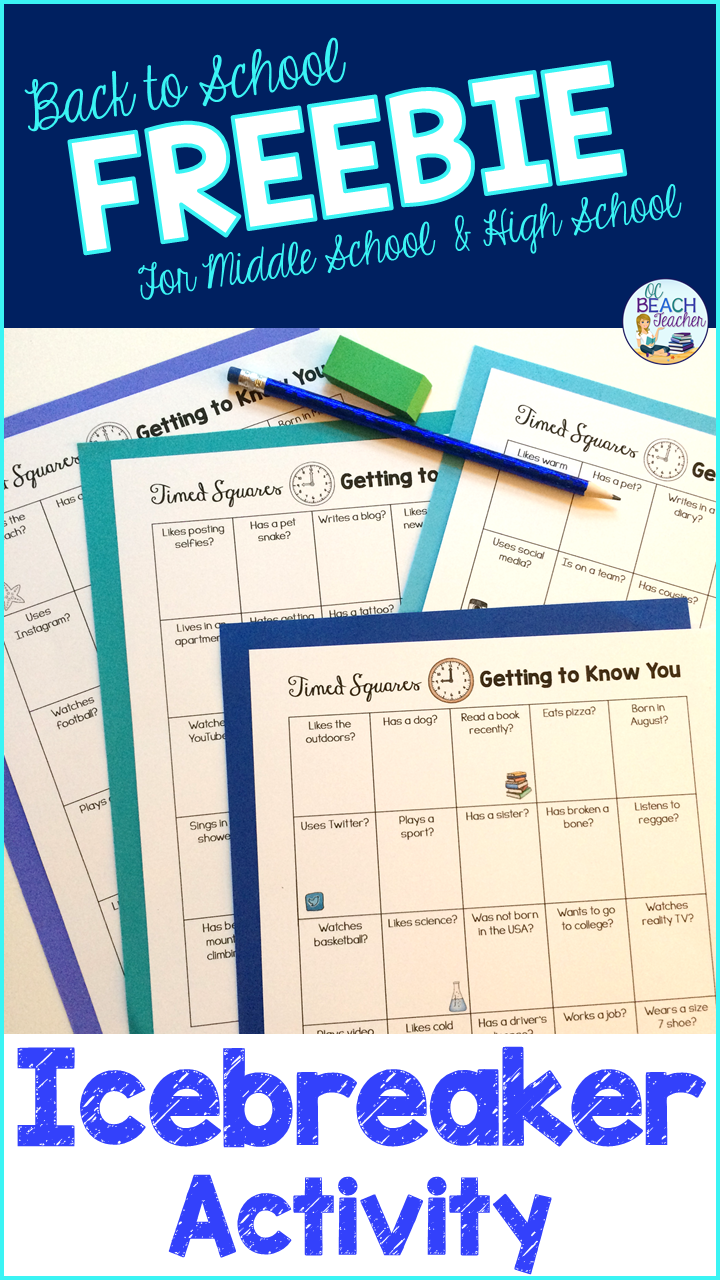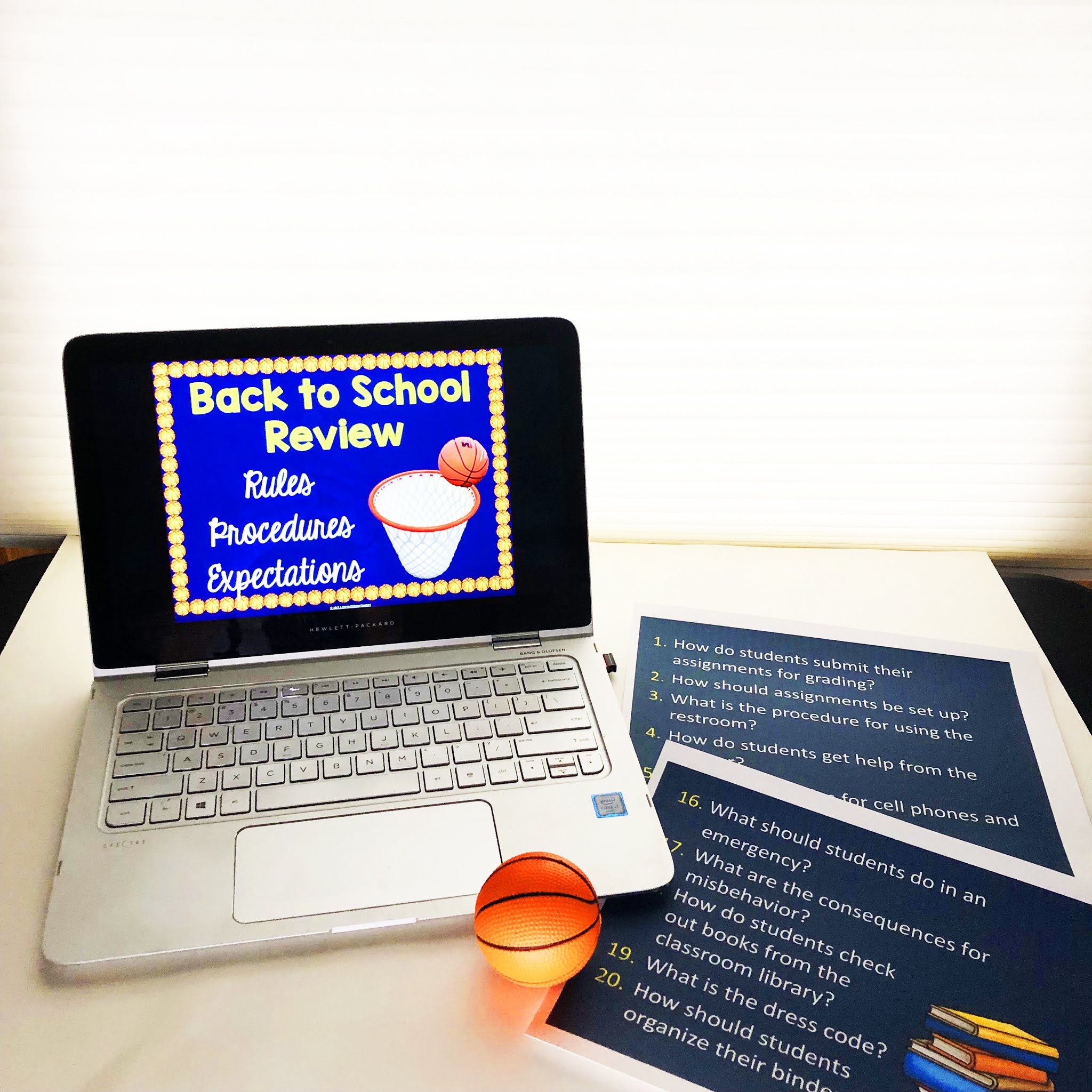No matter whether you’re a brand-new teacher or 30-year veteran, every teacher hopes to begin the school year on track to have success. In teacher education programs and schools around the country, there is no shortage of advice for back to school because having a positive start sets the tone for a favorable school year.
However, advice varies and can be confusing. Some educators recommend that teachers refrain from smiling for months while others suggest letting your students sit wherever they want on the first day of school. And as all experienced teachers know, every year presents new challenges, new research, and new technology, so we need to adapt and be flexible all of the time! That’s why I have my “go to” strategies every year but tweak them for the most current situation. In fact, it’s taken me 24 years of teaching to feel confident about my return to school. I’ve acquired a few strategies to share with you.
1. Empower yourself by learning student names.
Being called by one’s name immediately develops a positive rapport; students feel recognized and respected as individuals. It’s also an excellent management tool because when students realize you know their names, they’re often less likely to misbehave. If you know a student’s name, it’s easier for you to call his or her parent or identify the student for an administrator.
When learning names, ask the students if they use nicknames and how to pronounce their names correctly. And to make remembering their names easier, make a commitment to learning the students’ names within 2- 3 days. Greet them at the door by their names. Repeat their names throughout class and admit when you make a mistake. Teachers are only human, after all!
Use Icebreakers In Person or Online
To better learn names, it helps to start with icebreakers. You may be interested in this free icebreaker or these team builders. Last year, when teaching virutally, I used “Two Truths and a Lie” in an onine discussion and a Padlet brainstorm where students identified things in common (favorite color, birthday month, hobbies, etc.) This year, I’m trying something new and will use this hexagonal thinking activity from Betsy at Spark Creativity.
2. Build Community
Building a welcoming and inclusive classroom has always been important, but the pandemic taught me that this is more important than ever. For that reason, I’ve added more community-building activities at the beginning of each class to help create a positive rapport with students. My 90-minute blocks start with online warm-up discussions. A mixture of whimsical, serious, practical, and fun, a small sample of the questions include the following:
- If you could only take three things to a deserted island, what would they be?Why did you choose these things?
- If you could talk to your pet (or another animal) and it could understand, what would you say? Why would you say this?
- What is your favorite holiday to celebrate? What do you like about this holiday?
- What is your favorite outfit to wear? Why do you like it?
- Would you rather be a zebra or a kangaroo? Why?
- Would you rather have three arms or three legs? Why?
- How do you stay motivated to do well in school? Give specific strategies in your response.
- How do you take care of your physical, emotional, and/or mental health? Give specific strategies in your response.
- Where do you want to live when you grow up? Why in this place?
- What social media or websites do you visit the most? Why these platforms and sites?
- What’s something that happened to you that has made you a stronger person? Why did it make you stronger?
- How do you think your best friend would describe you? Why these traits?
- What is the last thing that made you laugh? What was funny about it?
- If you were a ghost, who or what would you haunt? Why?
- What goes with bacon? You can’t say eggs!
- You have a tutoring session for a test next week.Your tutor is from the last television show or movie you watched. Who is it?
- It’s burger night! What toppings will your burgers have? What’s the best way to eat your burger?
Along with questions, I ask students to post photos (with the option not to if they don’t feel comfortable). Some of these photos include:
- Pets
- Family and friends
- Favorite books
- Favorite places to hang out
- Silly hat
- Study space
- Memes (school appropriate)
In another activity last year, I used breakout rooms to play “survivor island” where students had to choose a limited number of items they would bring to a deserted island. The groups had to compromise and provide a rationale for each item that they selected. Then, they shared their group’s choices with the rest of the class when they’re finished. This was a hit!
3. Minimize chaos by making a seating chart.
Earlier in my teaching career, I took another teacher’s advice and let my students choose their own seats for the first week of school. The philosophy behind this made sense. I’d see who gravitated to whom and know whom to separate or allow to be seated together.
However, this strategy didn’t work for me because students immediately sat with their friends and formed cliques. It gave me some insight into the character of my students, but it made it difficult to develop a strong community of learners who all work together. In addition to the formation of cliques, I realized that this was intimidating for any students new to the school or who didn’t have friends in the class.
Furthermore, it let the kids who wanted to pay less attention to sit in the back of the classroom when they really should have been upfront. Now I organize my seating chart in alphabetical order for the first week of school. This helps me learn their names quickly (see #1) and makes it clear that I’m the class authority. After about a week, I have a better sense of the students’ personalities, group dynamics, and learning needs so that I can rearrange my seating chart in order for students to have academic success.
4. Don’t do all of the talking.
Remember the economics teacher played by Ben Stein in Ferris Bueller’s Day Off? In one classic scene, he calls out “Anyone? Anyone?” as he drones on to comatose students. Besides boring your students, constant lecturing exhausts you, and may lead to laryngitis.
Keep Video Chats Short
If I teach online again this year, I expect to use Zoom or another video platform for class lectures and discussion but will keep the sessions short. Even though I teach on a block schedule, last year I learned that limiting online class meetings to 30 minutes was optimal. In truth, it’s best to employ the 20-20-20 rule when teaching online.
It may seem hard not to talk at your students during the first days of school (there are so many things to explain, right?) but save everyone’s sanity by encouraging your students to do the talking. In fact, I do an activity called “chunking” where students explain the syllabus to me!
If you’re still not sure about who should do the talking, think about a recent professional development meeting when the presenter talked for hours on end (maybe with a PowerPoint) and reflect on how unengaged you and your colleagues felt. Do you want to be that person?
5. Create a calm and peaceful classroom with routines.
Imagine all of the questions your students will have on the first days of school:
- Will there be homework?
- Where will they turn in their papers?
- What should they do if they have to go to the bathroom or nurse?
- What should they do if they’re absent?
Some spontaneity may be exciting at times but not when it comes to attentive students who are expected to learn. Many students are nervous (especially freshman in high school) and they need you to give them tools to accomplish the learning goals. If you don’t already have some of these procedures mapped out, take time before school starts to plan your responses to the innumerable questions your students will have. Once you know the answers, you may want to implement activities that will help them understand your expectations and procedures.
It’s also important to revisit your rules, procedures, and expectations after the first week of school. Like anything else you teach, true mastery of learning takes review. That’s why I like to use my Back to School Trashketball Game after a couple of weeks have passed. I usually prefer a fun activity for class on Friday, and this game is helpful when everyone is tired from returning to the hectic school routine. It brings energy to the room and builds community.
6. Use a flexible teaching approach.
Of course, prepared teachers have plans for their lessons, units, and on-going curriculum, but effective teachers also know that it’s imperative to be able to change and adapt quickly. Life (and people) are unpredictable, and we can’t always foresee the events and discussions that may occur on any given day. For instance, I’ve often found that impromptu class meetings, assemblies, and fire drills will interrupt the sequencing of my lessons, and I’ve learned to not only accept these interruptions but even relish them at times. (Who doesn’t enjoy a fire drill on a beautifully sunny day?)
I even keep this philosophy in mind throughout my daily teaching. Now that I have many years of teaching experience, I’m likely to change my lessons as the school day proceeds. If something doesn’t work in an earlier class, I may change it to work better for the following class. I also consider the different needs and dynamics of each class as I teach throughout the day. With a flexible teaching approach, I can also better support the emotional health of my students.
Of course, I still get butterflies in my stomach the night before the school year begins, but they’re not nearly as bad as they were in the past.
Implementing these strategies makes the transition from summer to a new school year go smoother. What helps you at the beginning of the year? What new strategies are you trying for the circumstances of this school year? I’m always interested in getting new ideas and insights. Add yours in the comments below.






